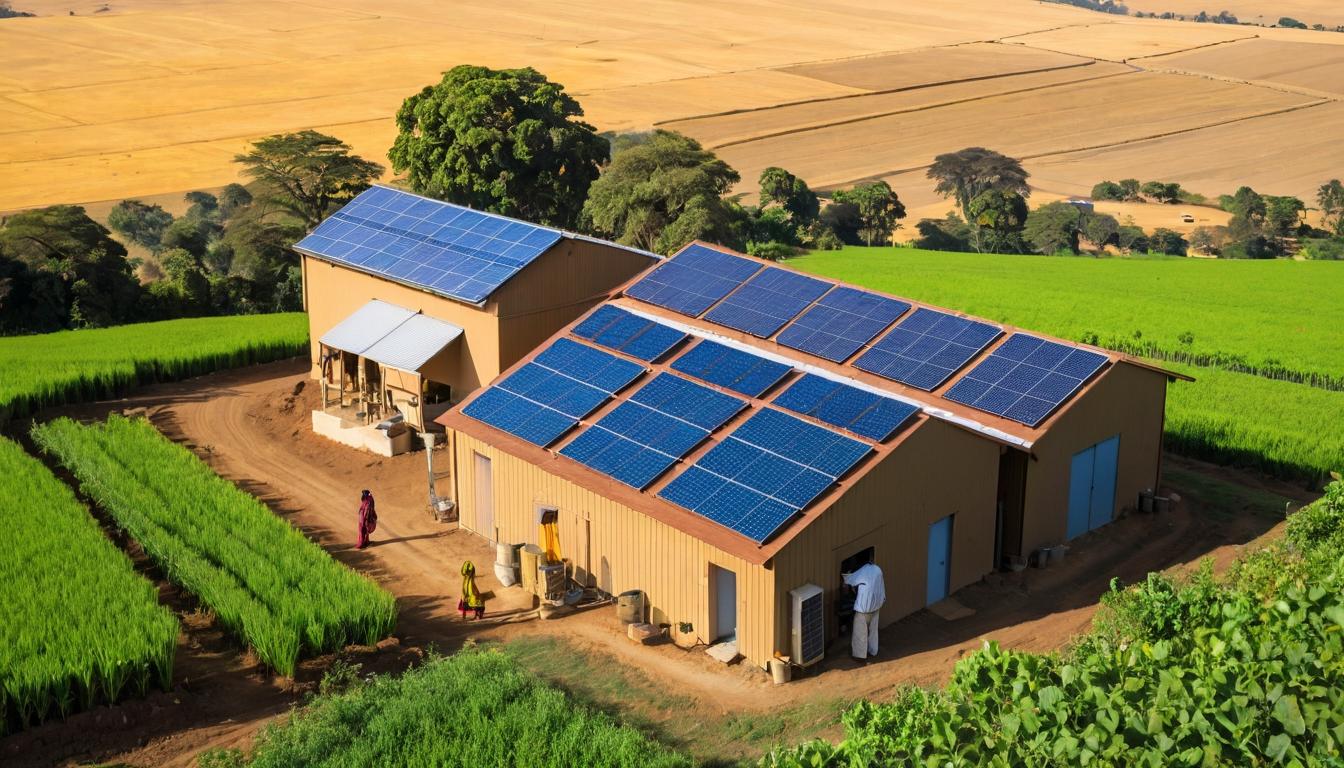The sun rises over the Midwest, casting long shadows across fields that have fed America for generations. But something new is growing alongside the corn and soybeans—rows of glistening solar panels that are quietly reshaping rural economies and challenging our notions of energy production. This isn't happening in California or the desert Southwest, but in places like Indiana, Ohio, and Iowa, where farmers are discovering that the most valuable crop might be the one that harvests sunlight.
What's driving this agricultural transformation isn't just environmental idealism—it's hard-nosed economics. Land that might generate $200 per acre from traditional crops can yield $800-$1,200 per acre when leased for solar development. For family farms struggling with volatile commodity prices and rising operational costs, solar leases represent financial stability that hasn't existed in generations. The contracts typically run 20-30 years, providing guaranteed income that helps farmers weather market fluctuations and plan for the future.
But the solar revolution extends far beyond farmland. Community solar projects are popping up in suburban neighborhoods and urban centers, allowing residents who can't install rooftop panels to buy into shared solar gardens. These projects democratize access to clean energy, particularly benefiting renters, apartment dwellers, and homeowners with shaded or unsuitable roofs. The model has proven so successful that states from Minnesota to Massachusetts are seeing waiting lists for community solar subscriptions.
The technology behind this expansion is evolving at breathtaking speed. While silicon panels still dominate the market, new materials like perovskite are promising efficiencies that could make today's panels look primitive. Researchers are developing transparent solar cells that could turn windows into power generators and flexible panels that can be integrated into building materials. The most exciting developments aren't happening in labs alone—they're being tested in real-world conditions from Arizona deserts to Alaskan winters.
Storage technology is keeping pace with generation advances. The lithium-ion batteries that power our phones and electric vehicles are being scaled up to household and grid levels, solving solar's fundamental challenge: what happens when the sun isn't shining? Home battery systems like the Tesla Powerwall and competing products allow homeowners to store excess solar energy for use at night or during outages. At the grid scale, massive battery installations are replacing peaker plants—the expensive, inefficient fossil fuel plants that utilities traditionally fired up during periods of high demand.
This storage revolution is changing how utilities think about reliability and capacity. In Texas, where the grid operates independently from the rest of the country, battery storage projects are being deployed at record pace following the devastating winter blackouts of 2021. California, which leads the nation in solar installation, now requires most new homes to include solar panels and is investing heavily in storage to manage its renewable energy abundance.
The economic impact extends beyond farmers and homeowners. Solar installation has become one of America's fastest-growing occupations, with jobs increasing 167% over the past decade according to the Solar Foundation. These aren't just temporary construction jobs—they include positions in sales, design, maintenance, and manufacturing. The industry's growth has been particularly significant in states that lost manufacturing jobs, with new solar panel factories opening in places like Georgia, New York, and Florida.
Despite this progress, challenges remain. Supply chain issues, particularly reliance on Chinese manufacturing for panels and components, have created vulnerabilities. The Uyghur Forced Labor Prevention Act has complicated imports from China's Xinjiang region, where much solar manufacturing is concentrated. In response, companies are diversifying supply chains and increasing domestic production, supported by incentives in the Inflation Reduction Act.
Interconnection delays represent another significant hurdle. The process of connecting new solar projects to the grid can take years in some regions, with backlogged utility studies and outdated infrastructure creating bottlenecks. Regional transmission organizations are working to streamline the process, but the pace of solar adoption continues to outstrip the capacity of many grid systems.
Looking ahead, the integration of solar with other technologies promises even greater transformation. Electric vehicles aren't just transportation—they're mobile batteries that can feed power back to homes or the grid during emergencies. Smart inverters and advanced metering allow for more sophisticated management of distributed energy resources. Artificial intelligence is being deployed to optimize energy flows, predict generation patterns, and manage demand response.
The story of solar energy in America is no longer about environmentalists versus utilities or rural versus urban. It's becoming a story of convergence—where farmers, city dwellers, utilities, and technology companies find common interest in harnessing the most abundant energy source available. As costs continue to fall and technology improves, this quiet revolution seems destined to become louder, more visible, and more fundamental to how America powers its future.
The quiet revolution: how solar energy is transforming America's heartland

